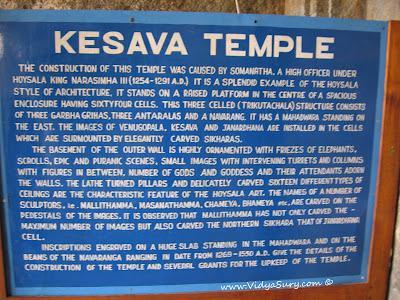
This temple is protected under The Ancient Monuments and Archaeological Sites and Remains Act, 1958. Here is the entrance to the temple - bounded by high stone walls. Little would you expect the sight inside
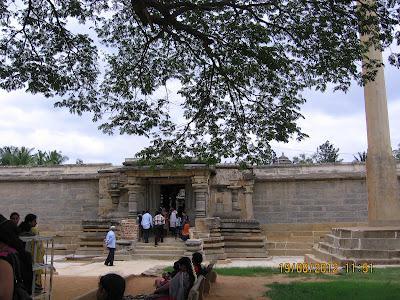
Somanathapura is a small village on the banks of the river Kaveri and about 130 kilometers from Bangalore. It is best known for the Chennakesava Temple, a grand representation of the Hoysala architecture - built around 1268 A.D. Now, the Hoysala Empire is known for its grandeur as evidenced by the gorgeous temples at Belur and Halebid in Karnataka (Oh, I'll visit those shortly and produce a full report when I recover from the beauty. )
So anyway - the powerful King Narasimha III (1254-91 A.D.) ruled South India (and whose full name is really a paragraph: "Sri Vishnuvaradhana, Pratapa Chakravarti, Hoysala Bhujabala, Sri Vira Narasimha, Maharajadhiraja, Raja Paramesvara, Sanivarasiddhi, Giridurgamalla etc.) at the time when his army commander, Somnath built the Kesava temple. This commander created a village and called it Somnathpur after himself. All this is written on a stone slab in the old Kannada script just inside the entrance of the temple.The symmetry is cool, no?

And here is the temple. Was surprised to see there was quite a crowd there - probably because of the long weekend.
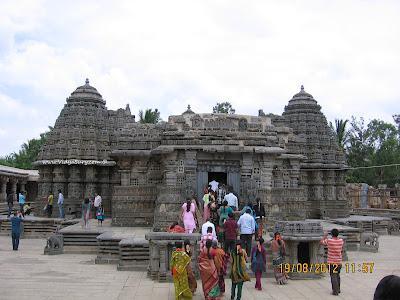
The temple stands on a raised platform and represents a "Universe" and there are scenes on the walls depicting Gods, Goddesses, animals, and lots more. The sculpture is unique and perfectly symmetrical. These are made of soapstone. The guide told us that they were carved on panels and then fitted together - interlocked - just like Lego. The detail in the carvings are stupendous and it takes more, much more than the four hours we spent gazing at the interiors and exteriors of the temple.
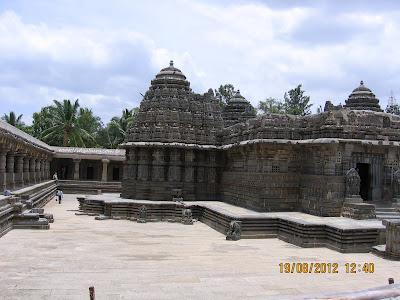
The outer walls have star shaped folds on which the carved soapstone plaques are placed. There are three sanctum sanctorums inside the temple with gorgeous idols of Kesava, Janardhana and Venugopala. The Kesava idol is missing today. See the little elephants holding up the temple? Here's the temple's entrance into the sanctums:
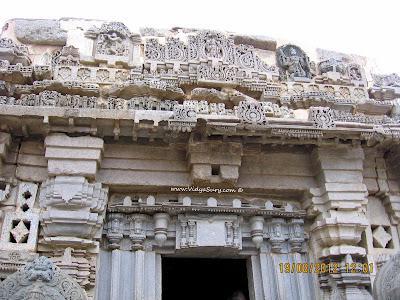 Look at the pillars! There were two types. Fantastically lathed and carved. You know, inside the temple it was pitch dark and I simply aimed and clicked. Thanks to the flash - I could actually see these! Nobody's home in this shrine:
Look at the pillars! There were two types. Fantastically lathed and carved. You know, inside the temple it was pitch dark and I simply aimed and clicked. Thanks to the flash - I could actually see these! Nobody's home in this shrine: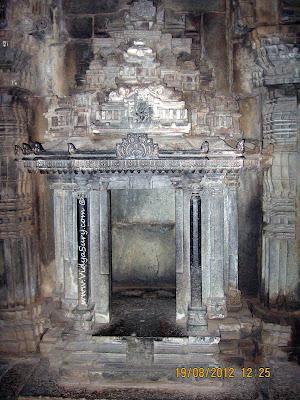
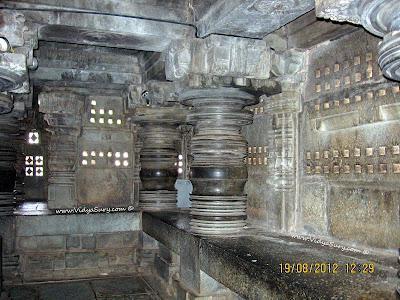
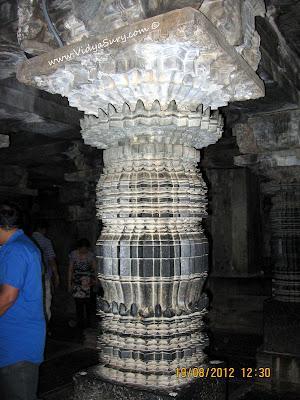 The ceiling was full of these - supposed to represent the insides of a slowly blooming lotus flower. This one is halfway there
The ceiling was full of these - supposed to represent the insides of a slowly blooming lotus flower. This one is halfway there
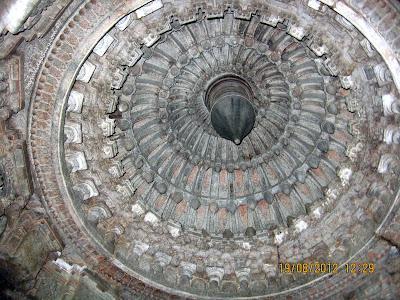 We'll take a tour around the outside of the temple. The darkened space is the entrance and we're taking a right turn to see the soapstone sculptures. On the left is our guide, who reeled off stories nonstop.
We'll take a tour around the outside of the temple. The darkened space is the entrance and we're taking a right turn to see the soapstone sculptures. On the left is our guide, who reeled off stories nonstop.
 They depict stories from the epics Mahabharata, Ramayana, Dashavatara - and lots of mythological tales
They depict stories from the epics Mahabharata, Ramayana, Dashavatara - and lots of mythological tales
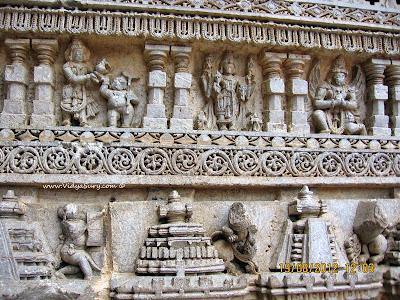
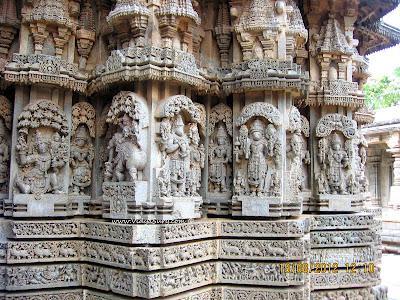
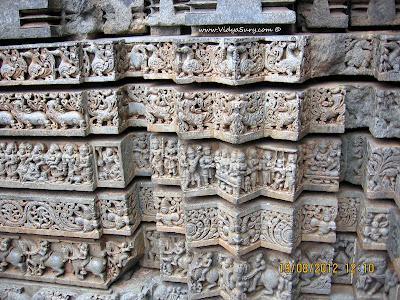

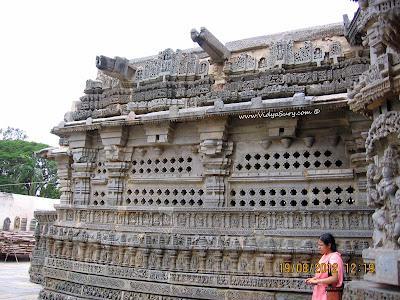
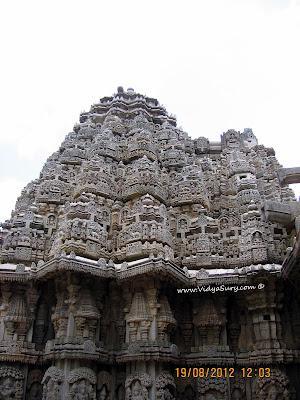
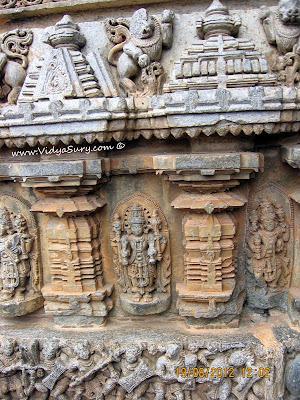 Lots of foreigners visit the temple - to take photographs and videos. The locals are quite blase about the temple.
Lots of foreigners visit the temple - to take photographs and videos. The locals are quite blase about the temple.

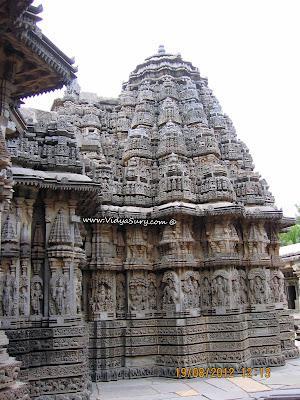
Sadly muslim invaders - Muhammad Tughlaq’s army - destroyed most parts of the temple and defaced every idol within. There is no worship at this temple as Hindus do not worship a broken idol. And believe it or not - there is not a single idol that is not damaged. Still, this 13th century Keshava Temple in Somnathpur is the best-preserved most complete monument of Hoysala architecture. I couldn't possibly not show you a photo of the Goddess Saraswati, right? Hey, She's my namesake, folks!
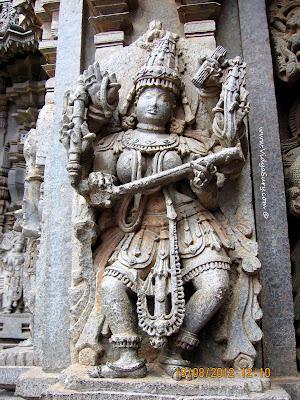
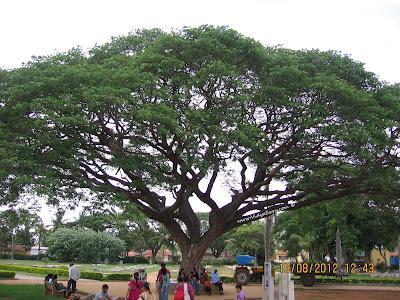 Lots of renovation work is going on right now to recreate the original beauty of this temple.
I could go back and gaze at the sculptures all day. I might actually do that. I had a tough time picking photos to post. As it is, I think this may be an overload. What to do? I have more than two hundred to choose from. Sigh.
Lots of renovation work is going on right now to recreate the original beauty of this temple.
I could go back and gaze at the sculptures all day. I might actually do that. I had a tough time picking photos to post. As it is, I think this may be an overload. What to do? I have more than two hundred to choose from. Sigh.
I hope you enjoyed these pictures. On Sunday, we will continue our journey - I'll take you to the third place we visited during this trip - Talakadu. It has an even more interesting story than this one.
Please join me again on Sunday. Happy weekend!

